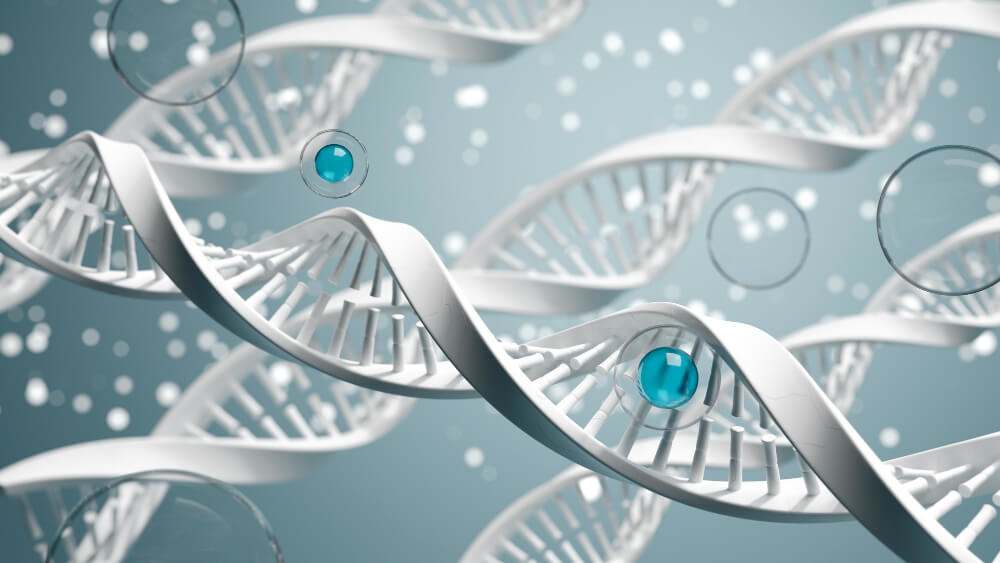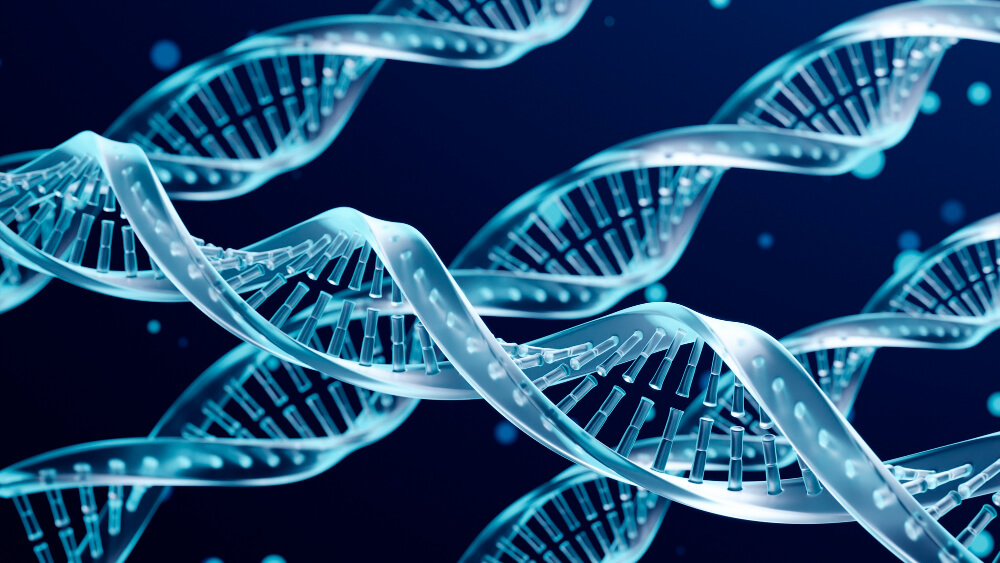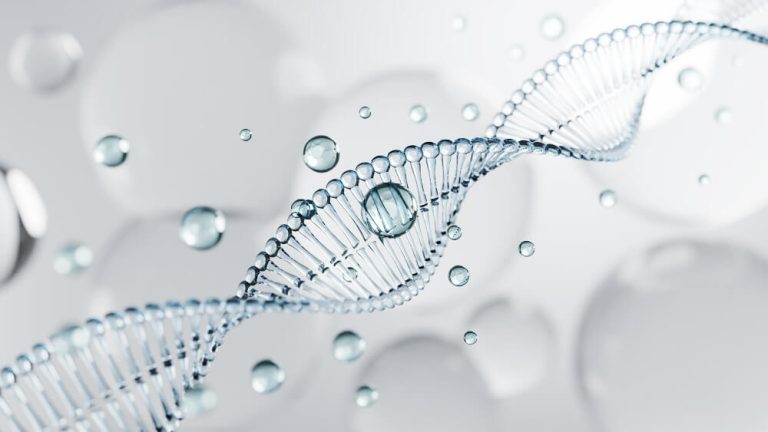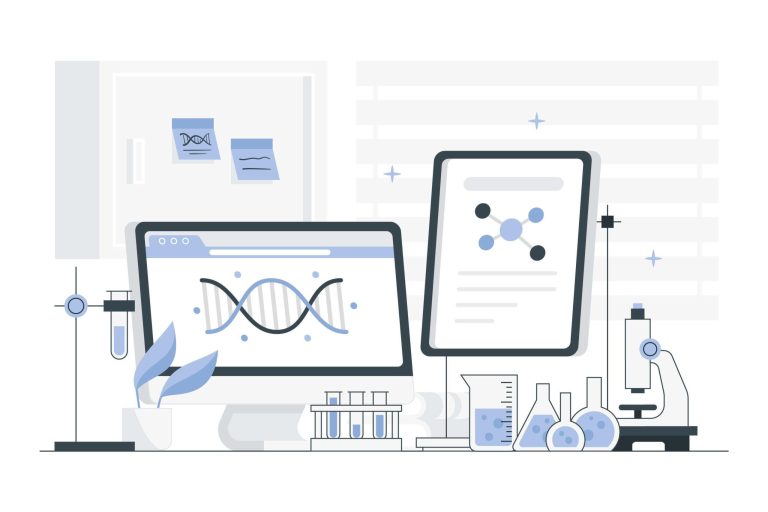The Ultimate Guide to Weight Loss Optimization: Beyond Calories and Cardio
The global conversation around weight loss is often loud, confusing, and frustratingly simplistic. You are told to eat less and move more, a mantra that echoes in magazines, websites, and even doctors’ offices. While this advice isn’t entirely wrong, it is a tiny piece of a much larger, more intricate puzzle. For millions who have diligently counted calories and spent hours on the treadmill with little to show for it, this simple formula feels like a broken promise.
The truth is that sustainable weight loss is not about deprivation or punishment. It is about optimization. It involves understanding your unique biology, from hormones to metabolism, and creating a personalized strategy that works with your body, not against it. This approach moves beyond the basic math of calories and delves into the science of how your body truly functions. For those ready to move past the basics, a comprehensive weight loss course optimisation can provide the structured, in-depth knowledge needed to master this process.
This guide is your first step toward that deeper understanding. We will deconstruct the old myths and rebuild your approach from the ground up, focusing on the key pillars that support lasting change. It is time to stop fighting a losing battle and start working intelligently towards a healthier, more vibrant you. Your body is a complex system, and it deserves a sophisticated solution.

Why is ‘calories in, calories out’ an oversimplification?
The concept of ‘calories in, calories out’ or CICO, is the bedrock of traditional weight loss advice. It suggests that if you expend more energy than you consume, you will lose weight. On a purely thermodynamic level, this is true. A calorie is a unit of energy, and a consistent energy deficit will lead to a reduction in mass.
However, the human body is not a simple furnace. The ‘calories in’ side of the equation is far more complex than a number on a food label. The type of calorie you consume matters immensely. One hundred calories from a sugary soda will have a vastly different hormonal and metabolic effect on your body than one hundred calories from a piece of salmon rich in protein and omega-3 fatty acids.
The body’s response to different macronutrients, the impact of food on hormones like insulin, and the role of the gut microbiome all complicate this simple equation. Furthermore, the ‘calories out’ side is not static. As you lose weight, your body often adapts by becoming more efficient, slowing your metabolism to conserve energy, a process known as adaptive thermogenesis. This is a survival mechanism that can lead to frustrating weight loss plateaus, proving that the CICO model is a starting point, not the entire map.

What role does metabolism play in weight management?
Metabolism is the sum of all chemical reactions in your body that convert food into energy. It is the engine that keeps you running, and its speed directly impacts how many calories you burn at rest. This resting energy expenditure, known as your Basal Metabolic Rate or BMR, accounts for the majority of your daily calorie burn.
Several factors determine your metabolic rate. Genetics play a role, which is why some people seem to eat whatever they want without gaining weight. Age is another factor; metabolism naturally tends to slow as we get older, partly due to a natural decline in muscle mass.
This brings us to the most significant controllable factor: your body composition. Muscle tissue is metabolically active, meaning it burns more calories at rest than fat tissue does. This is why building and maintaining lean muscle mass through strength training is one of the most powerful strategies for boosting your long-term metabolic rate. Your metabolism is not a fixed trait; it is a dynamic process you can influence through strategic choices in diet, exercise, and lifestyle.

How can you truly master your nutrition?
Mastering nutrition for weight optimization means looking beyond calorie counts and focusing on food quality and hormonal impact. It is about nourishing your body to support a healthy metabolism, control hunger, and provide sustained energy. This starts with a solid understanding of macronutrients: protein, fats, and carbohydrates.
Protein is arguably the most important macronutrient for weight management. It has a high thermic effect, meaning your body burns more calories digesting it compared to fats and carbs. Protein is also crucial for satiety, helping you feel fuller for longer and reducing overall calorie intake. Most importantly, adequate protein intake helps preserve lean muscle mass during a calorie deficit, which is essential for keeping your metabolism elevated.
Carbohydrates are your body’s preferred energy source, but their quality is key. Complex carbohydrates, found in vegetables, legumes, and whole grains, are rich in fiber. This fiber slows down digestion, leading to a more gradual rise in blood sugar and insulin. In contrast, simple or refined carbs, like those in white bread and sugary drinks, cause rapid blood sugar spikes, promoting fat storage and leading to energy crashes.
Healthy fats, like those from avocados, nuts, seeds, and olive oil, are also essential. They play a vital role in hormone production, brain health, and the absorption of fat-soluble vitamins. Fats also contribute to satiety, helping to manage appetite. The goal is not to eliminate any single macronutrient but to find the right balance and quality of each to support your individual needs. When you are ready to learn more, you can explore various dietary approaches to see what might align with your lifestyle.
Beyond the macros, micronutrients like vitamins and minerals are the unsung heroes of metabolic function. They act as cofactors in thousands of biochemical reactions, including those that govern energy production and fat burning. A nutrient-dense diet ensures your metabolic machinery has all the parts it needs to run smoothly. For a solid primer on the basics, understanding the fundamentals of how to lose weight is an excellent starting point for anyone.

What is the most effective way to exercise for weight loss?
Just as with nutrition, the most effective exercise strategy for weight optimization is a nuanced one. The classic advice to simply perform hours of cardiovascular exercise is outdated. While cardio is excellent for heart health and burning calories during the activity itself, its effects can be limited. A truly effective plan leverages the powerful synergy between cardiovascular exercise and resistance training.
Strength training is the cornerstone of metabolic optimization. By lifting weights, using resistance bands, or performing bodyweight exercises, you create microscopic tears in your muscle fibers. As your body repairs these fibers, the muscle grows stronger and larger. As mentioned earlier, this increased muscle mass acts like a metabolic furnace, burning more calories 24/7, even when you are resting on the couch.
Cardiovascular exercise, of course, still has its place. Activities like running, cycling, swimming, or brisk walking are fantastic for improving cardiovascular fitness, reducing stress, and creating a calorie deficit. The key is to find a balance. A combination of two to three days of strength training and two to three days of moderate-intensity cardio per week is a powerful formula for most people.
Finally, do not underestimate the power of Non-Exercise Activity Thermogenesis, or NEAT. This refers to all the calories you burn from activities that are not formal exercise, like walking to your car, taking the stairs, fidgeting, or doing housework. Consciously increasing your daily NEAT by parking further away, taking short walking breaks, or using a standing desk can significantly contribute to your total daily energy expenditure without requiring extra time at the gym.

How do hormones influence your ability to lose weight?
Hormones are chemical messengers that regulate nearly every process in your body, and they are major players in the weight management game. When your hormones are out of balance, even the most perfect diet and exercise plan can fail to produce results. Understanding their role is critical for true optimization.
Insulin is one of the most well-known hormones related to weight. Its primary job is to shuttle glucose from your bloodstream into your cells for energy. When you eat a diet high in refined carbohydrates and sugar, your body constantly pumps out insulin. Over time, your cells can become less responsive to its signals, a condition called insulin resistance. This leads to high blood sugar and high insulin levels, a state that strongly promotes fat storage, particularly around the abdomen.
Leptin and ghrelin are your primary hunger and satiety hormones. Ghrelin, produced in the stomach, signals hunger to your brain. Leptin, produced by your fat cells, signals that you are full. In a healthy system, these hormones work in harmony. However, factors like poor sleep and chronic stress can disrupt this balance, increasing ghrelin and decreasing leptin sensitivity, leaving you feeling constantly hungry and rarely satisfied.
Cortisol, the ‘stress hormone’, is another key factor. In short bursts, cortisol is helpful, but chronic stress from work, life, or even overly restrictive dieting leads to persistently elevated cortisol levels. High cortisol can increase appetite, drive cravings for high-fat, high-sugar foods, and encourage the body to store visceral fat, the dangerous type of fat that surrounds your internal organs.
Thyroid hormones, produced by your thyroid gland, are the master regulators of your metabolism. If your thyroid is underactive, a condition known as hypothyroidism, your metabolism can slow down considerably, leading to weight gain, fatigue, and other symptoms. Likewise, sex hormones like estrogen and testosterone play a role in body composition. Changes in these hormones during perimenopause, menopause, or andropause can shift fat distribution and make weight management more challenging. Evaluating how therapies impact overall health is crucial, which is why a thorough evidence review on TRT and its cardiovascular effects is important for medical professionals.

Can technology help you optimize your weight loss journey?
In the modern age, technology offers powerful tools to move from guessing to knowing. Bio-feedback devices provide real-time data about your body, empowering you to make more informed decisions and understand your unique responses to diet and lifestyle changes. This data-driven approach is a cornerstone of weight loss optimization.
Wearable fitness trackers are the most common entry point. Devices from brands like Fitbit, Garmin, and Apple can track your daily steps, monitor your heart rate during exercise, and estimate your total calorie burn. Perhaps their most valuable feature is sleep tracking. Getting consistent, high-quality sleep is non-negotiable for hormonal balance and appetite regulation, and these trackers can highlight areas for improvement.
For a much deeper level of personalization, continuous glucose monitors or CGMs are becoming a game-changer. Originally designed for individuals with diabetes, these small, wearable sensors track your blood glucose levels in real-time, 24/7. This allows you to see exactly how your body responds to specific foods. You might discover that a ‘healthy’ oatmeal breakfast sends your blood sugar soaring, while eggs and avocado keep it stable for hours.
Understanding your personal glucose response is incredibly powerful. It helps you build a diet that minimizes blood sugar spikes, reduces insulin demand, and controls cravings. For healthcare professionals looking to implement this technology with clients, learning the specific protocols for using continuous glucose monitors is essential for interpreting the data and providing effective guidance.

Why do most diets fail in the long run?
The diet industry is built on a cycle of hope and failure. The reason most conventional diets fail is that they are designed as temporary fixes, not permanent lifestyle changes. They often rely on extreme restriction, which is simply not sustainable for the vast majority of people.
This restrictive mindset creates a psychological battle. When certain foods are labeled as ‘bad’ or ‘forbidden’, it can increase cravings and lead to a ‘binge-restrict’ cycle. You follow the rules perfectly for a while, then ‘slip up’, feel guilty, and abandon the diet altogether, often regaining any weight you lost and then some.
Physiologically, extreme calorie restriction can backfire. As discussed earlier, your body can perceive a severe diet as a threat of starvation and slow down your metabolism to conserve energy. When you eventually return to normal eating patterns, your slower metabolism makes you more susceptible to rapid weight regain. This yo-yo dieting effect can be damaging to both your metabolism and your morale over time.

How can you build sustainable habits for lifelong results?
True, lasting success comes from shifting your focus from ‘dieting’ to ‘habit building’. Instead of making drastic, sweeping changes you cannot maintain, the goal is to implement small, incremental improvements that become an automatic part of your daily routine. This is where the real magic happens.
Start with changes that feel almost too easy. Instead of vowing to go to the gym for an hour every day, commit to a 10-minute walk after dinner. Instead of overhauling your entire diet, start by adding a serving of vegetables to your lunch. This approach builds momentum and self-efficacy without triggering feelings of overwhelm.
A powerful technique for this is ‘habit stacking’, where you link a new desired habit to an existing one. For example, ‘After I brush my teeth in the morning, I will drink a full glass of water’. This anchors the new behavior to something you already do automatically. While the allure of quick results is strong, it is important to recognize the potential pitfalls and dangers of trying to lose weight as fast as possible, as these methods rarely lead to sustainable outcomes.
Mindful eating is another critical skill. It involves paying full attention to the experience of eating, noticing the flavors, textures, and your body’s signals of hunger and fullness. This practice can help you break free from mindless snacking and emotional eating, reconnecting you with your body’s innate wisdom. Building a supportive environment, both with people who encourage your goals and by stocking your kitchen with nourishing foods, sets you up for success.

When should you consider working with a professional?
While self-guided optimization can be very effective, there are times when seeking professional help is the wisest course of action. A qualified professional, such as a registered dietitian, a certified nutrition coach, or a functional medicine practitioner, can provide personalized guidance, accountability, and expertise that can accelerate your progress and help you overcome obstacles.
Consider seeking help if you have hit a stubborn weight loss plateau that you cannot break through on your own. A professional can analyze your current approach and identify blind spots or necessary adjustments. They can also be invaluable if you have underlying health conditions like Polycystic Ovary Syndrome (PCOS), thyroid disorders, or insulin resistance, as they can help you navigate the specific dietary and lifestyle changes required.
Sometimes, the biggest benefit is simply accountability and structure. Knowing you have a knowledgeable guide in your corner can provide the motivation and clarity needed to stay consistent. For those seeking reliable, evidence-based information, exploring official weight management resources from government health agencies is always a good practice.

What advanced options are available for significant weight loss?
For individuals with obesity or significant weight-related health issues, standard lifestyle interventions may not be sufficient. In these cases, a medical approach under the supervision of a qualified healthcare provider is often necessary. These advanced options are designed to provide more intensive support when it is clinically appropriate.
Medical interventions can include pharmacotherapy, which involves the use of prescription medications that can help with appetite control, satiety, or nutrient absorption. These medications are not magic pills and must be used in conjunction with a comprehensive lifestyle program of diet and exercise. They are tools to help make those lifestyle changes more manageable and effective.
It is crucial that these advanced treatments are managed by healthcare professionals who are well-versed in the latest evidence and protocols. For medics and clinicians, staying educated through resources like an advanced course on pharmacotherapy for obesity is essential to provide the safest and most effective care for their patients struggling with complex weight issues.
Your weight loss journey is deeply personal. It is a path of self-discovery that goes far beyond the numbers on a scale. By embracing the principles of optimization, focusing on nourishment over restriction, and building sustainable habits, you are not just losing weight. You are investing in your long-term health, vitality, and well-being. It is a journey worth taking, and it starts with the decision to look beyond the simple answers and seek a smarter, more personalized approach.
Frequently Asked Questions

Do I need a specific medical or science background to get certified in body composition analysis?
While a formal medical degree is not typically required, a foundational understanding of human anatomy and physiology is highly advantageous and often a prerequisite. This background ensures you can grasp the scientific principles behind the technology and its measurements. Most quality training programs are designed for professionals in the health, fitness, and wellness fields who already possess this core knowledge.
Many successful trainees come from diverse backgrounds such as personal training, dietetics, chiropractic, and kinesiology. The certification process builds upon your existing expertise, focusing on the specific protocols for safe equipment operation and the ethical interpretation of scan results. The goal is to make you a competent technician and analyst, not to replace the role of a medical doctor.

How will this training help me use body composition data to better serve my clients?
This training equips you to translate complex scan data into simple, actionable strategies that drive client success and retention. You will learn to move beyond just weight and BMI, focusing on critical health indicators like visceral adipose tissue (VAT), bone density, and muscle symmetry. This allows for the creation of truly personalized fitness and nutrition plans that address specific needs and risks.
By mastering data interpretation, you can more effectively demonstrate progress that isn’t always visible on a traditional scale, which is a powerful tool for maintaining client motivation. You’ll be able to pinpoint muscular imbalances to refine training programs or use VAT measurements to underscore the importance of dietary changes. This elevated level of service establishes you as an expert and provides immense value to your clients.

Besides DEXA, what other body composition methods are typically covered and how do they compare?
A comprehensive training program often covers a range of common assessment tools to provide a complete perspective on the industry. These frequently include bioelectrical impedance analysis (BIA), skinfold caliper measurements, and sometimes 3D optical scanning. The curriculum delves into the underlying science, standard operating procedures, and the inherent strengths and limitations of each method.
During the course, you will learn why DEXA is considered a clinical gold standard due to its precision and ability to differentiate between bone mass, fat mass, and lean soft tissue. You will also learn to critically assess when a more accessible method like BIA is suitable for regular progress tracking versus when the detailed, regional data from a DEXA scan is essential. This knowledge allows you to select the right tool for your client’s specific goals and budget.
Discover the most comprehensive functional medicine training, longevity training, and biohacking certification programs designed specifically for healthcare professionals, medics, and clinic owners who want to master regenerative medicine protocols and anti-aging therapies.







